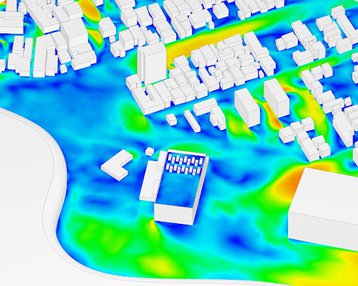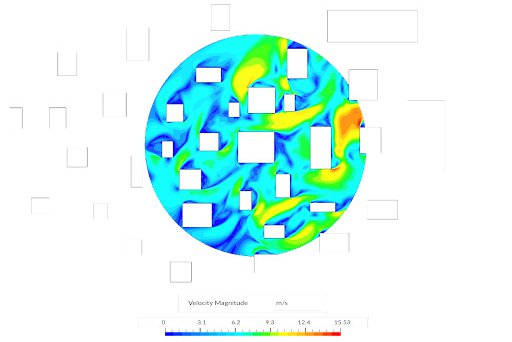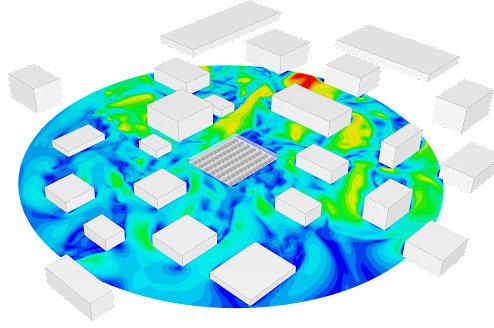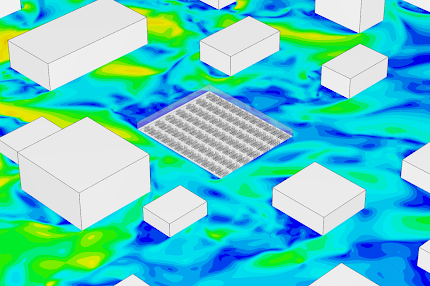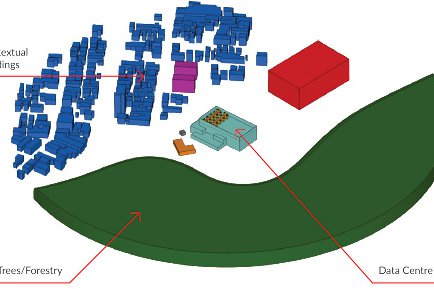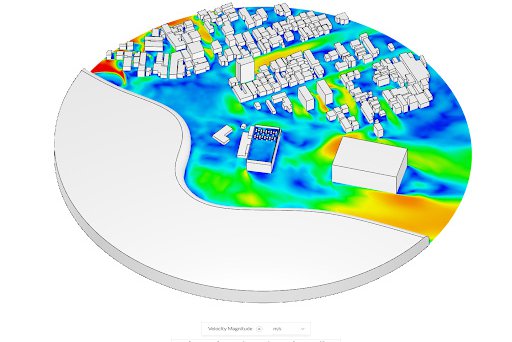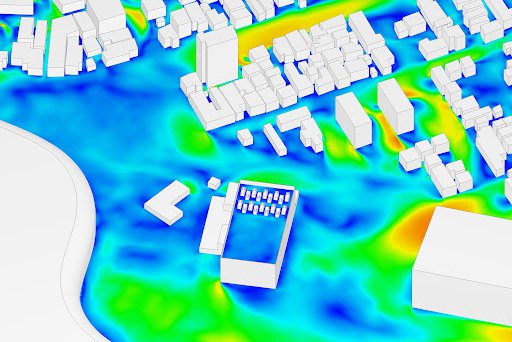Recent approaches to siting and cooling data centers use natural sources as heat sinks to minimize energy consumption. They involve leveraging the local climate and natural resources such as lakes, prevailing winds, and cooler climates, and continue to push the boundaries of data center designs.
These often experimental design advances require extensive design verification and testing using sophisticated computer models based on simulation of real-world physics applied to a 3D model of a data center and its surroundings.
Many data center professionals are used to dealing with the internal environment where cooling, airflow, and energy consumption are calculated. Less well understood is how the external site and specifically, microclimate factors, will influence data center design and operation.
Why simulate the microclimate?
Predicting natural forces such as wind and outdoor temperatures, and their impact on buildings, requires an understanding of building physics, atmospheric science, and urban design. When locating a data center site and/or choosing which ventilation and cooling strategy to employ, the following factors become important:
- The local microclimate including wind patterns, speeds, prevailing direction, and also outdoor ground and air temperatures. The resolution for this data must be at least hourly.
- The wind profile in that location might be influenced by surrounding buildings, trees/vegetation, the topography, and further away geographical features.
- Turbulence created by surrounding buildings and objects and also rooftop features such as chillers and air handling units
- Window and ventilation openings and their predicted wind pressure coefficients. Only a computational fluid dynamics (CFD) generated wind pressure profile that is accurate and accounts for the above factors, should be used for calculating air flow rates and sizing openings.
- Avoiding re-entrainment of exhaust gasses and air from ventilation extracts or diesel generators for example
- Calculation of wind loading and forces on the facade and rooftop equipment. This is essential to comply with structural and safety codes.
- Coupling the above external factors with calculating the indoor environmental variables such as ventilation flow rates, temperatures, and presence of pollutants.
Common design tools do not have the required physics or computational resources to capture the dynamic phenomena mentioned above. A cloud-native CFD software optimized to simulate the microclimate on 3D CAD models is needed. The virtually unlimited computing power of the cloud ensures that larger models and even climate projections can be handled robustly.
Recent advances in physics solvers have meant an order of magnitude increase in the speed of simulation with many of the tedious parts of the traditional simulation process, such as CAD import and meshing, being automated.
Case Study
A CAD model of a data center with surrounding buildings is imported and simulated against six wind directions using an integrated climate database. Wind simulation uses the integrated lattice Boltzmann method (LBM) solver Pacefish, which automates much of the process. Outputs include local wind velocities, rooftop wind speed, surface wind pressure coefficients, and outdoor thermal comfort data, all of which can be fed back to run indoor environmental calculations. Because the simulations run in the cloud and on GPUs, many can be run simultaneously offering the engineer the ability to run multiple design scenarios without compromising computational resources or time.



